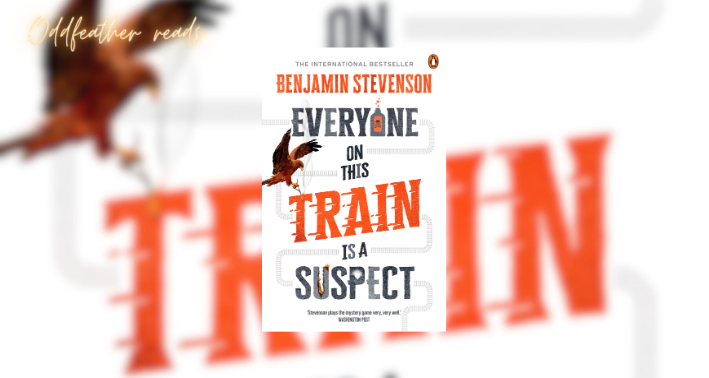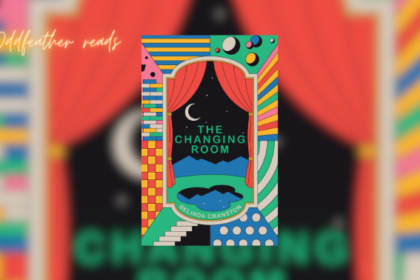Benjamin Stevenson keeps on track with Everyone on This Train is a Suspect.
Everyone on This Train is a Suspect is Benjamin Stevenson’s second whodunit murder mystery novel told in first person by his endearingly human narrator and main character, Ernest Cunningham.
The fourth wall breaking of this book, much like the first – Everyone in my Family has Killed Someone – makes it a little confusing to explain, but here we go:
In the world of the story, Ernest is an author of ebooks about how to write Golden Age mysteries a la Agatha Christie, Arthur Conan Doyle, etc. The first book that Ernest writes – Everyone in my Family has Killed Someone – is about his family reunion at a mountain resort that becomes snowed in. murders and detecting ensue in the classic style of a Golden Age locked room murder mystery, and Ernest, being the expert in the rules of the genre, ends up solving it as it’s all happening.
This book – Everyone on this Train is a Suspect – sees Ernest and his girlfriend board a train that is hosting a murder mystery writers festival, which they have been invited to because of the book that Ernest wrote about what happened in the cabin. The train journey lasts several days and traverses the centre of Australia, from Darwin to Adelaide, and is populated with several other murder mystery writers, guests, and members of the publishing industry, who are all part of the festival.
Headlining the event, in a very rare public event appearance, is a legendary crime writer from Scotland; a writer of psychological thrillers; an author of forensic procedurals; a legal thriller writer about to launch her first book in twenty years; and a literary writer who thinks the whole thing is beneath him. The writers are a mess of egos, bad blood, petty competitiveness, and industry gossip, and Ernest is struggling with imposter syndrome and survivor’s guilt, when someone dies in a very dramatic fashion during one of the festival events.
From there, things really go off the rails.
Stevenson has carefully crafted another excellent locked-room mystery that not only follows all the rules of Golden Age mysteries, but, with narrator Ernest at the helm, also contrasts the genre with the messiness of reality. From the beginning, the protagonist is up front about the realities of murder and other inconvenient real things: ‘So I’m writing again. Which is good news, I suppose, for those wanting a second book, but more unfortunate for the people who had to die so I could write it.’ Much like Stevenson’s first murder mystery, this novel is a fun mess of self-referential fourth-wall-breaking, excellent foreshadowing, and tinkering with the murder mystery genre that plays enjoyably with the author-reader relationship.
Like any good example of the genre, everything is tied up very satisfyingly at the end, and all the misunderstandings, red herrings, and inter-character involvements come out into the light. And not just to the expectations of a murder mystery, but beyond that to bring it back to earth and reality, leaving a pleasant sense that Ernest is in good hands where lands at the end of the story.
This book is great for lovers of whodunits, enjoyers of clever locked room mysteries, and fans of epic, action-packed train journeys.
This review was first published on AU Review.





